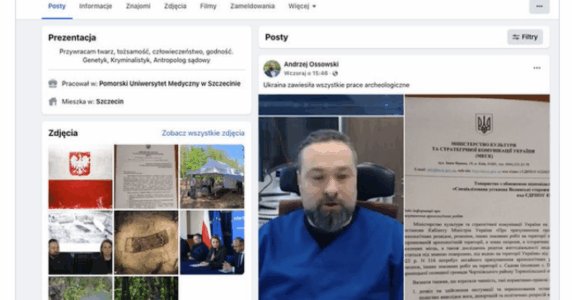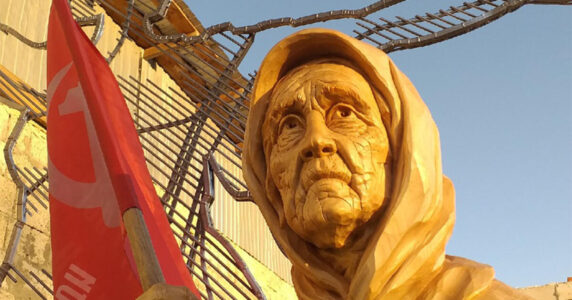Navigation and useful materials
On June 2, during negotiations in Istanbul, Ukrainian and Russian representatives agreed to exchange seriously wounded and gravely ill prisoners of war on an “all-for-all” basis, including young soldiers under 25. Both sides also reached an understanding on repatriating the remains of 6,000 fallen servicemen. Ukraine placed no restrictions on the process—but Russia swiftly began distorting the narrative for its own political ends.
Just days later, on June 7, Vladimir Medinsky, an aide to President Putin, publicly claimed that Kyiv had “suddenly and indefinitely postponed” both the prisoner exchange and the return of the dead. This baseless accusation marked the beginning of a broader psychological campaign orchestrated by Russian intelligence to sow division and panic within Ukrainian society.
The planned exchanges began on June 9. In tandem, Russian intelligence services launched a coordinated disinformation effort designed to peak on June 20—when the final stage of the repatriation process was scheduled.
The Kremlin’s strategy is familiar: since direct appeals to Russian ideology no longer sway Ukrainians, Moscow focuses on destabilizing the country from within. By amplifying domestic tensions and exploiting emotionally sensitive topics—particularly military casualties, missing persons, and POWs—Russian operatives aim to fracture public trust in Ukrainian institutions. These themes are particularly painful for Ukrainians, in contrast to the Kremlin’s historical disregard for the fate of its own soldiers.
Weaponizing Grief and Disinformation
One of the central themes of this campaign is misinformation about military losses. In February 2025, Russia’s General Staff claimed, without evidence, that Ukraine had suffered over 1 million casualties. This figure was widely debunked by international experts and Ukrainian authorities alike. Nevertheless, Russian-controlled Telegram channels continued to flood the Ukrainian information space with fake statistics—400,000, 500,000, and so on.
To give these lies a veneer of credibility, Moscow disseminates fabricated “analytical” content: claims that Ukrainian cemeteries are “turning into cities,” that bodies are secretly burned or left uncollected, and that thousands of the dead are officially listed as “missing” to mask true losses. These fabrications are accompanied by exaggerated battlefield narratives—collapsing fronts, encircled brigades, and Russian troops poised to reach the English Channel.
The large-scale repatriation of remains gave Russian propagandists an opening to intensify their psychological pressure. Within a single week, the following narratives were aggressively promoted:
- That Ukrainian authorities attempted to delay or sabotage the return of the dead;
- That Ukraine received many more bodies than it returned, allegedly proving disproportionate casualties;
- That Russia is holding 40,000 Ukrainian corpses and is only releasing a fraction;
- That Kyiv is avoiding repatriation in order to dodge compensation payments to bereaved families.
Ukrainian intelligence also warned that the Kremlin intended to release fabricated lists of dead Ukrainian soldiers and civilians, allegedly “identified” by Russian forces.
The goal is clear: provoke fear, outrage, and mistrust—especially among the families of the missing or fallen and their fellow servicemen. Russia’s propaganda seeks to convince these groups that the Ukrainian government treats its soldiers as expendable, and that peace (read: capitulation) is the only alternative.
The Facts
Contrary to these narratives, Ukraine is working relentlessly to save lives and honor the fallen. President Zelenskyy has openly acknowledged Ukraine’s wartime losses—approximately 46,000 killed and 380,000 wounded, as of February 2025. In the most recent exchange, Ukraine recovered the remains of 6,057 soldiers, according to the national Coordination Headquarters.
But the process is not without cruelty. Ukrainian authorities report that Russian forces return bodies in horrific condition—sometimes with a single soldier’s remains scattered across multiple bags. In some cases, remains of Russian soldiers were mixed with those of Ukrainians, likely in an effort to inflate the numbers and complicate identification.
POWs as Political Hostages
The Kremlin is equally cynical in handling prisoner-of-war exchanges. Since the full-scale invasion began, Russia has falsely claimed that Ukrainian troops are surrendering en masse. At times, Russian officials even fabricate data or spread stories suggesting that Ukrainian POWs prefer to remain in Russia.
To manufacture unrest in Ukraine, Moscow routinely delays or cancels scheduled exchanges. In January 2023, for example, Russian operatives hyped a planned exchange via Telegram channels targeting POW families. These networks encouraged protests, then abruptly canceled the exchange at the last minute—broadcasting a small protest as a so-called “Widows’ Maidan” demanding peace negotiations with Russia.
In the meantime, Russia continues to violate the Geneva Conventions. Ukrainian POWs are held in inhumane conditions, often subjected to torture and mock trials that result in long, fabricated sentences—further complicating their release. Russian propaganda uses these tactics to fuel false claims that Kyiv is “sabotaging” or “refusing” to recover its soldiers, particularly members of the Azov Regiment.
Targeting the Vulnerable
Relatives of POWs remain a top target for Russian intelligence services. These emotionally vulnerable individuals are manipulated, extorted, or even recruited. Posing as volunteers, journalists, or officials, both Russian operatives and common scammers promise to “help” free loved ones—for a price.
The Kremlin’s ultimate aim is to dismantle trust in the Ukrainian government and sow division within society. But the evidence points in the opposite direction: Ukraine remains committed to the return of every defender—civilian or soldier—despite Russia’s ongoing war of aggression.
As Russia weaponizes humanitarian issues for political gain, the international community must remain alert. Truth and transparency are Ukraine’s strongest assets—and disinformation is the Kremlin’s deadliest export.
If you have found a spelling error, please, notify us by selecting that text and pressing Ctrl+Enter.


